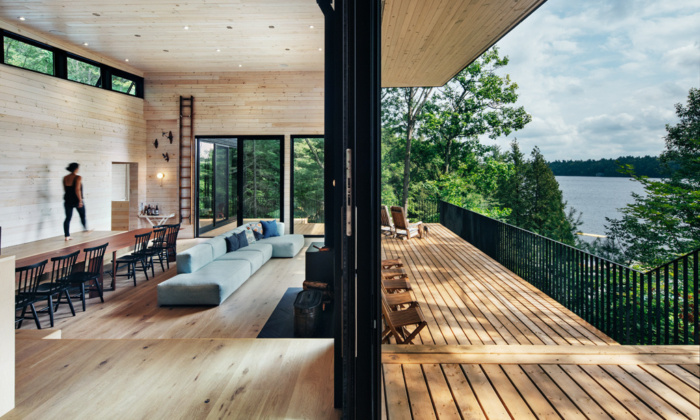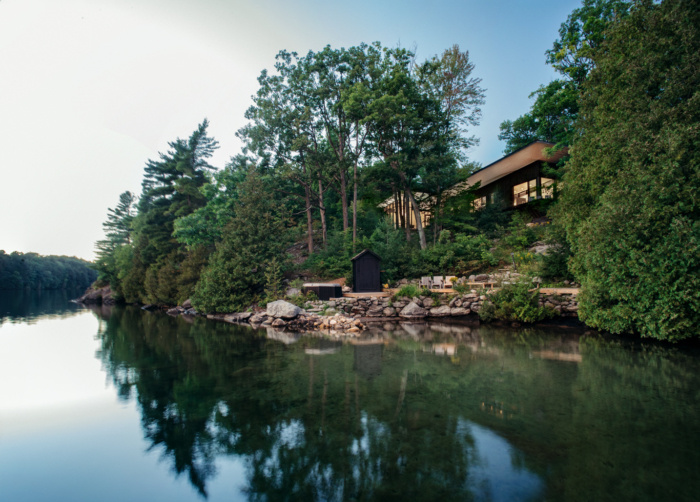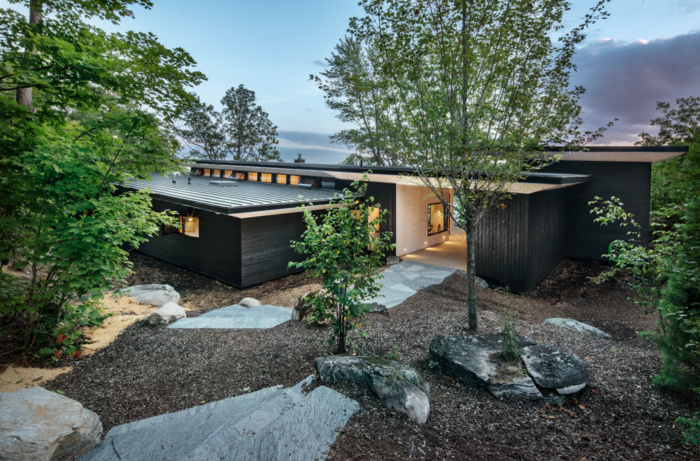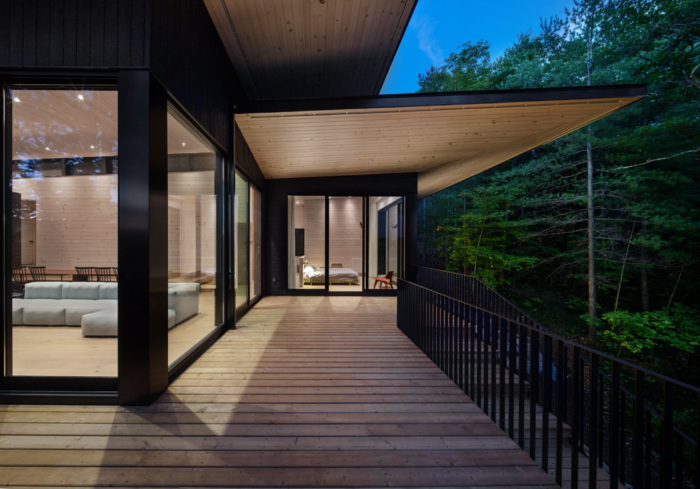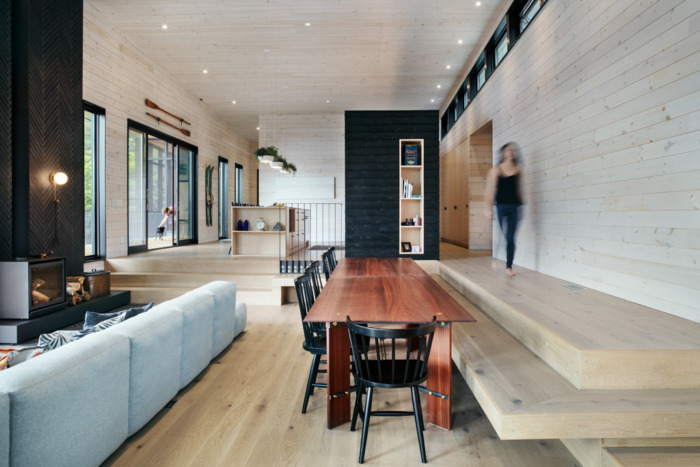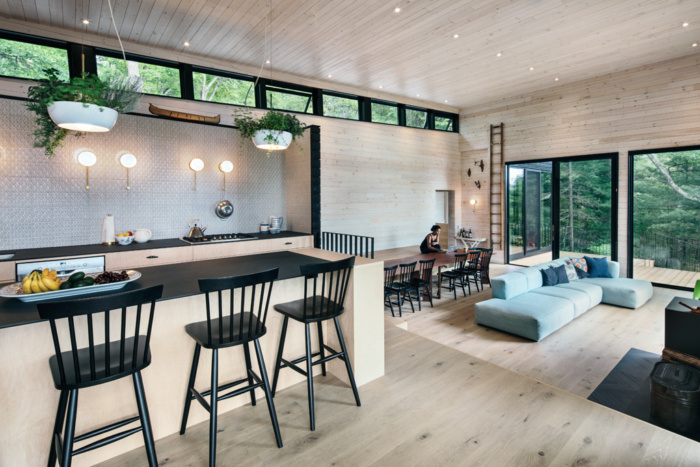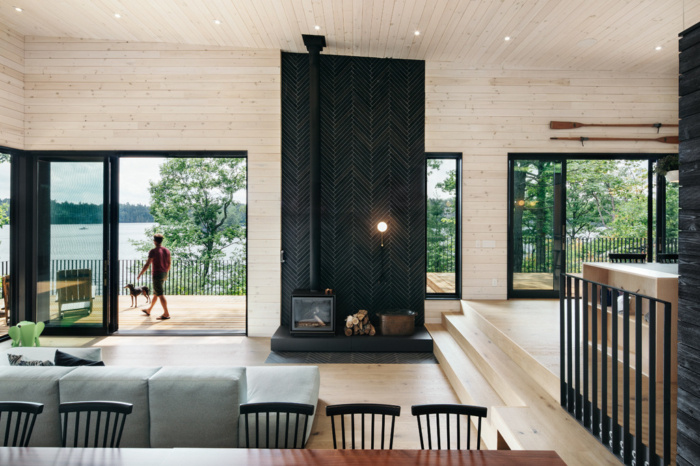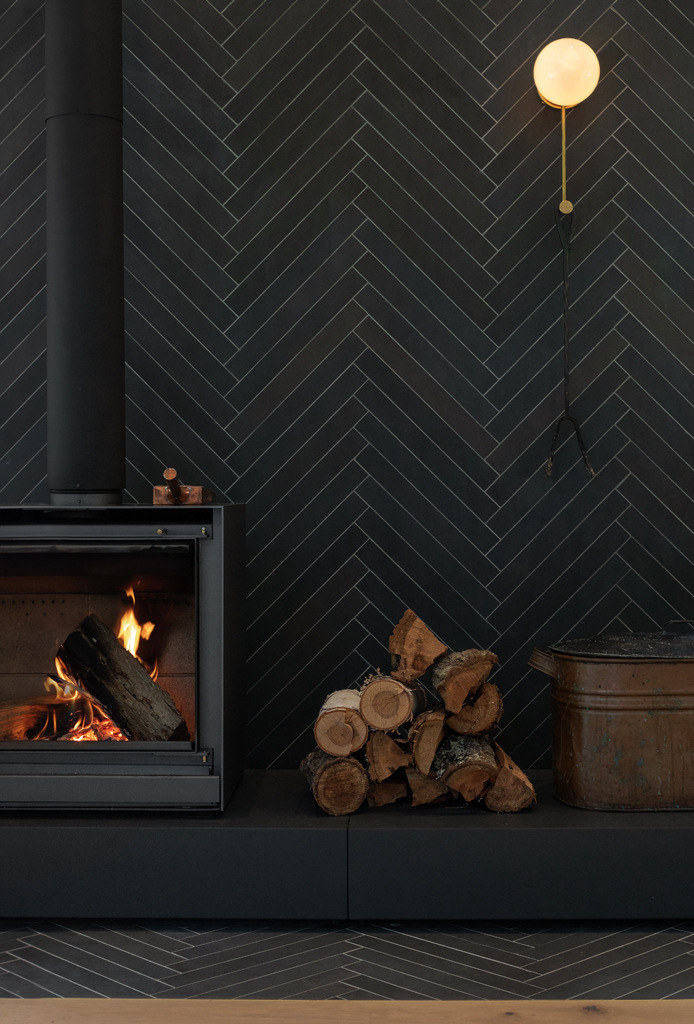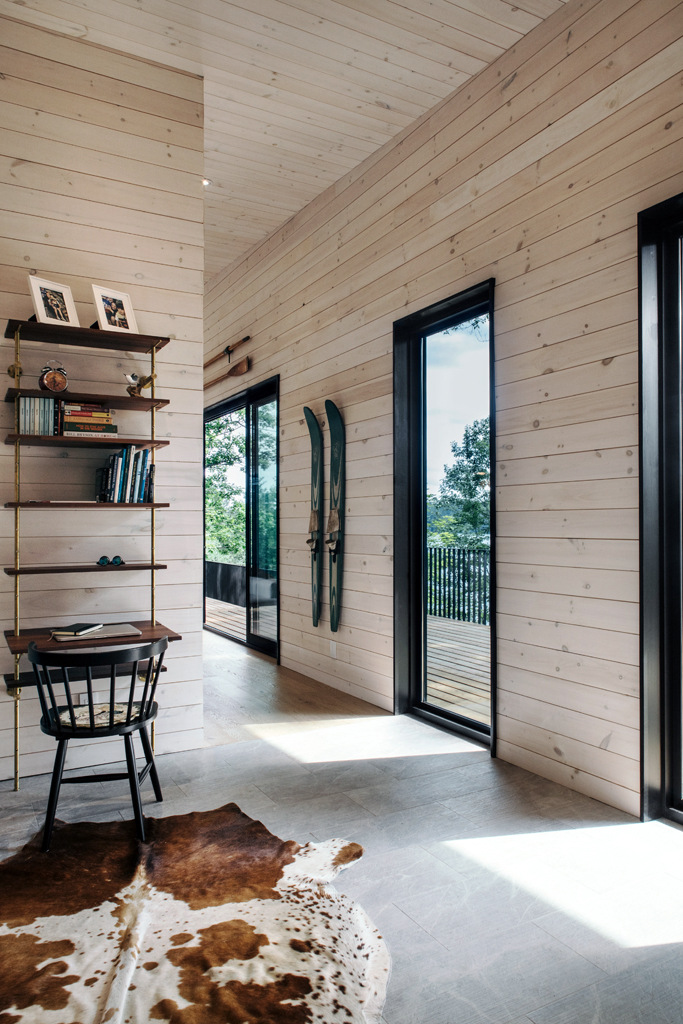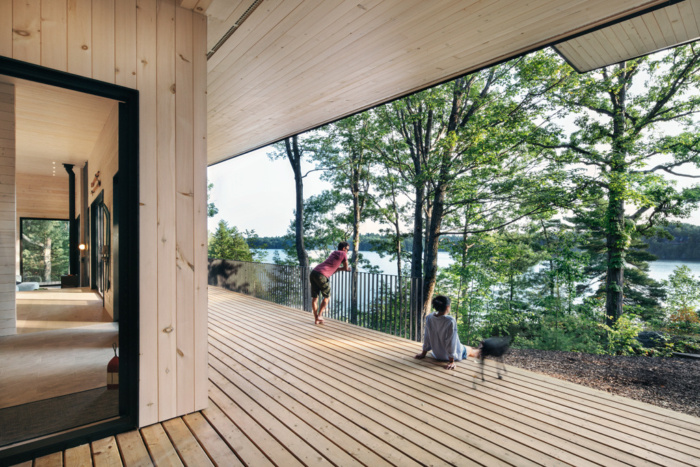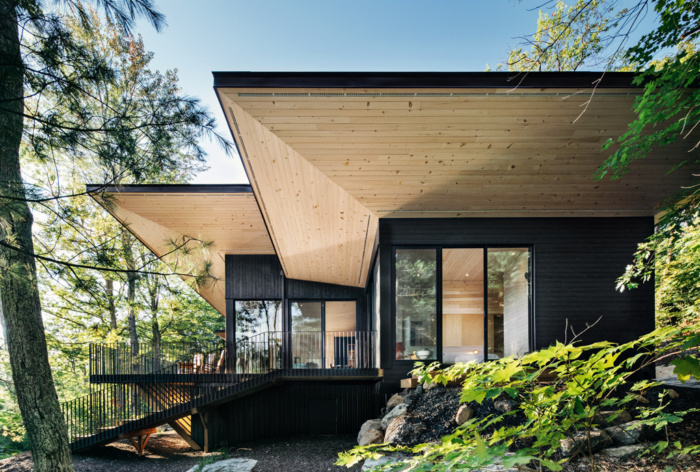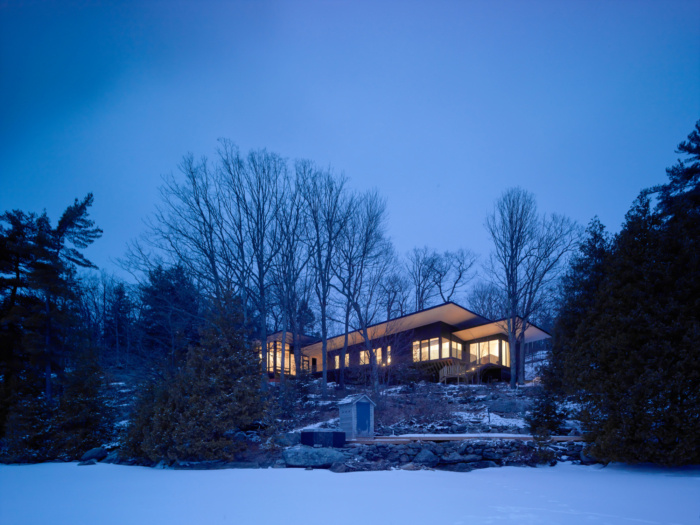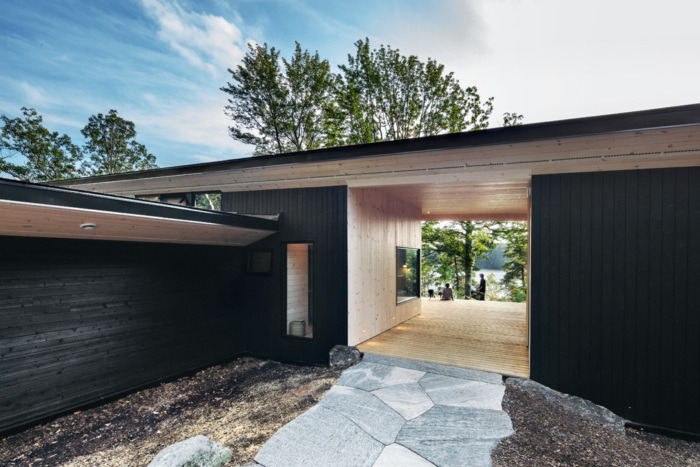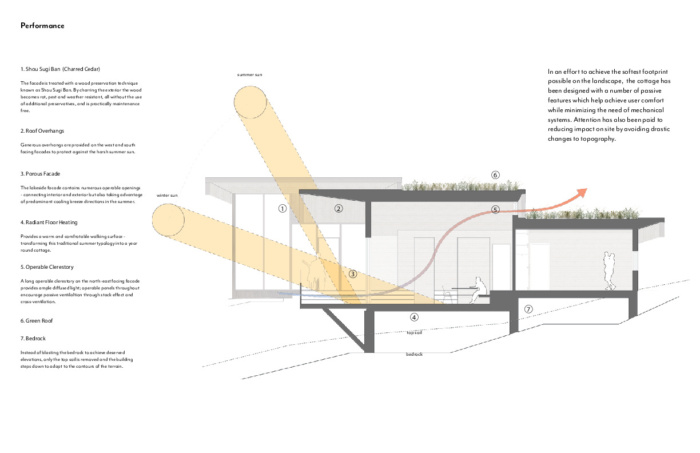Lake Joseph Cottage
VFA Architecture + Design realized this Canadian retreat cottage, a home that provides the essentials and comforts of all-season living while respecting the surrounding Muskoka landscape.
Responsive to both site conditions and programmatic needs, the cottage was an exercise in finding an alternative to the “bigger is better” trend that is currently dominating cottage design. The resulting form – a series of low-slung volumes deeply embedded into the landscape – provides all the needs and comforts of all-season, 21st century living while honouring and respecting Muskoka’s cultural and natural landscape.
Since the early 1860s Ontario’s Muskoka region has been an important summer tourism destination for thousands of city-dwelling Ontarians, resulting in a rich accumulation of over 100 years of recreational architecture among the region’s 16,000 lakes. These cottages, ranging from modest log cabins to ornate Victorian summer homes, capture an important regional history and are deeply embedded into Muskoka’s cultural landscape.
The past decade has seen the development of a new chapter in Muskoka’s architectural history – one characterized by a dramatic shift in scale that threatens to erode the region’s unique character. The once humble and unobtrusive structures tucked into the hilly shores of the region are now being replaced by supersized McMansions –oversized recreational residences that speak little to the Muskoka’s character. This phenomena is particularly acute on Lake Joseph which has become an international destination for local and global celebrities.
Lake Joseph Cottage seeks to provide a contemporary alternative to the supersized McCottage – one that addresses all the needs and comforts of all-season, 21st century living while honouring and respecting Muskoka’s rich cultural and natural landscapes.
The cottage’s massing is guided by a profound understanding of local site conditions – including topography, solar orientation, vegetation, and existing views – as well as a comprehensive understanding of the family’s programmatic needs. The resulting form is a series of low-slung volumes deeply embedded into the site unifed by a trio of formally expressive roofs with generous overhangs towards the south and west facades.
In an effort to achieve the softest footprint possible on the landscape, the cottage has been designed with a number of passive features which help achieve user comfort while minimizing the need of mechanical systems – including strategically located openings to encourage natural ventilation and a striking naturally-preserved facade that is practically maintenance free. Attention has also been paid to reducing impact on site by avoiding drastic changes to topography and making the most of existing site conditions. The resulting cottage provides a significant contribution to the current dialogue on how to design cottages which allow us to enjoy Canada’s unique wilderness without undermining the natural beauty we seek to enjoy.
Design: VFA Architecture + Design
Photography: Cindy Blazevic, Scott Norsworthy

